Co-authored by Evita Rodrigues and Sanya Sharma
“More than anything else, schools are instruments for bridging inequalities in the country and breaking the cycle of poverty – it has such a radical role in a developing society, especially for children and their rights.”
– Shanta Sinha, child-rights activist and former Chairperson, National Commission for Protection of Child Rights
~
As the traffic light turns green, the car speeds off, leaving behind the little girl in the yellow dress selling storybooks on the street.
I turn back and glimpse through the rear window. Her small figure grows smaller until I can see no longer see her.
Did I render her invisible? Did I normalize her plight? What could I have done, anyway?
Without an address, she cannot have an identity. The streets are not safe, but neither are the shelter homes. How will she match the learning level of her peers? Can the present schooling system ever make her employable?
What can be done — what can I do?
~
The Right To Education (RTE) Act seeks to ensure that every child is guaranteed the right to free and compulsory primary education. However, realizing this right continues to be a distant reality for many children, particularly those on the street.
Whose Responsibility is it Anyway?
The problems of children on the street begin with the fact that there is no one to look out for them in the first place.
There is no one to collectively mobilise for their cause or protest because they are neglected. Without any political pressure to draw politicians’ attention, the State remains unmoved to prioritise their needs.
This means that the will to collective political action is lacking. At present, there is no joint mechanism to coordinate the activities of the Ministry of Human Resource Development (responsible for implementing the RTE), the Ministry of Women and Child Development (responsible for the health and safety of children), and the Ministry of Social Justice and Empowerment (responsible for providing social security to destitute and marginalised children).
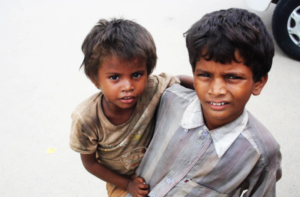
Children on the streets are in need of not just access to schools, but also safety and health care to enable them to regularly attend school. A coordinated approach among various departments and ministries of the State is essential.
However, assigning responsibility alone is not enough. Well-monitored systems of accountability must be designed to ensure that children are secure within both schools and shelter homes, the latter being especially notorious for being unsafe. Providing secure shelter to children who lack it is imperative to their Right to Life, which subsumes the Right to Education.
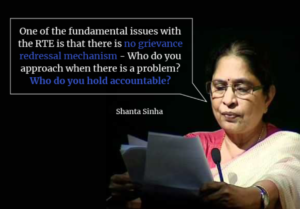
“Appeals to commissions at the state or national level should be the last resort. Issues must first be addressed at local levels. While the RTE gives authority to local bodies to deliver services, it must empower them to monitor the implementation and ensure accountability,” adds Shanta Sinha.
Not Enough Information: Tracking, Identification and Enrollment
At present, no state government in India can provide credible data on the number of children living on the streets in its cities. This makes it difficult to target schemes. Concentrated efforts to collect data on these children could help in targeting the State’s enrollment efforts.

The lack of formal identification is a discouraging hurdle for children on the streets who try to enrol in schools. Experts like Shanta Sinha suggest implementing informal processes of identification, such as verification by members of the local political body or by neighbours.
Rather than denying admission to children for lack of identification documents, schools should take the responsibility of simplifying the process of identification and encouraging children in their vicinity to enrol. The State should consider incentivising the school system for the same.
Further, to ensure that children stay in school and refrain from irregular attendance or eventually dropping out, it is crucial that we collect information on the factors that keep them out of school in the first place.
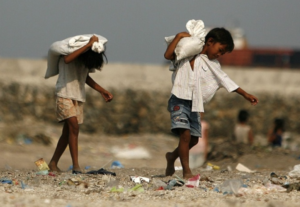
Stricter enforcement of laws against child labour, as well as a system of direct benefit transfer in education, could help bring in and retain more children.
From Streets To Schools
When toddlers are taken to school for the very first time, a parent is asked to accompany the child for the first few days until the child becomes comfortable with the new environment. For a variety of reasons, formal learning setups can be very new and intimidating for children who are unaccustomed to being anywhere but on the streets. This makes it imperative to create inclusive learning spaces in which children are integrated empathetically.
At present, many NGOs serve as a source of age-appropriate training for children on the streets who find little support within the classroom. These organisations conduct educational assessments of children to gauge their current education level and provide bridge courses for out-of-school children to bring them up to speed prior to enrolment.
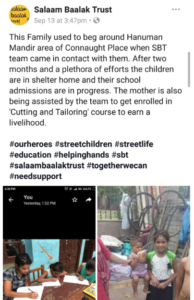
It is important to pay attention to their psychological needs as well, especially due to their vulnerabilities. NGOs in the field make efforts to stimulate children’s interest in education. They also conduct psycho-social counselling and grooming sessions to prepare them for their entry into formal classrooms. Several NGOs also go a step further and work closely with the family and community at large to prevent poor attendance and subsequent drop-outs.

Maintaining that existing provisions can be effective in integration if implemented properly, Varun Rangarajan (Indus Action) adds, “Section 12(1)(c) [of the RTE] which mandates 25% reservation [for socially and economically challenged children] in private unaided schools is a great way to bridge social segregation. Indus Action is currently working with the Delhi Government to conduct workshops for fee paying parents to help them integrate children students of various backgrounds into the classroom space.”
However, the RTE does not have any specific provisions for children on the streets or those engaged in begging or child labour. There is a need for specific enrollment processes and education programmes that are sensitive to the vulnerabilities of these children and facilitate their integration into the school system. Moreover, is also important for schools to be sensitive to these vulnerabilities, as the successful implementation of the Act is largely dependent on the willingness of school administrations to go the extra mile and make arrangements.
The Value of Education?
Even after going through the arduous process of ensuring that these children see the inside of a classroom, we must ask how effective this education is in empowering them intellectually, socially, and emotionally.
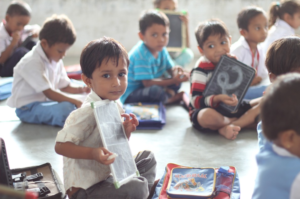
Being able to earn a livelihood is crucial for children living on the streets. Thus, there is a need to ensure that their education is adequately skill-based so as to ensure that children are equipped with employable skills, the ability to think for themselves and pursue their goals. While this may include vocational or employment skills that may be beneficial in the short run, emphasis must be placed on long-term skills such as digital literacy, communication and critical thinking that will help in levelling the playing field for them.
Utilising NGOs in “consultancy mode”
Crucial as they are, the efforts of NGOs are limited in scope. The question arises: how do we bring large-scale structural changes that benefit every child?
Experts suggest that the Government should seek help from other organisations working for causes. In 2017, former Education Secretary Anil Swarup observed that instead of importing education solutions from other countries, which often require piloting coming from alien contexts, governments and nonprofits should work in tandem to come up with context-specific solutions.
“Governments should utilize NGOs in consultancy mode, as NGOs constantly innovate and can bring innovative solutions while Governments have the capacity to scale these ideas. Governments must be open to learning, and collaborate with NGOs to filter best practices.”
– Varun Rangarajan (Indus Action)

~
How does someone get rendered invisible?
Growing up, whenever a child knocked at our car doors begging for money or trying to make a sale, we were often told, “Look away. Don’t make eye contact. Ignore them, and they’ll go away.”
But where do they go?
~
A large part of being rendered unseen despite naked visibility comes from public apathy. Looking after one of the most vulnerable sections of our society necessitates not just State effort and civil society participation, but also putting these children on our political agenda.
Making sure every child on the street has access to a classroom and quality education within it is undoubtedly an uphill task, but a collective effort can make it happen. It does, after all, take a village to raise a child.
This is Part Two of a two-part series by The Bastion that covers the status of education for one of the most marginalised groups in India – the children on the streets. Read Part One: “From Streets to Schools: The Girl in the Yellow Dress“
You can explore the educational outreach by these NGOs in Delhi:
https://protsahan.co.in/project-educare/
http://www.salaambaalaktrust.com/full-care-residential-programme.html
http://www.salaambaalaktrust.com/outreach.html
https://www.cry.org/nature-of-support
https://www.savethechildren.in/what-we-do/education


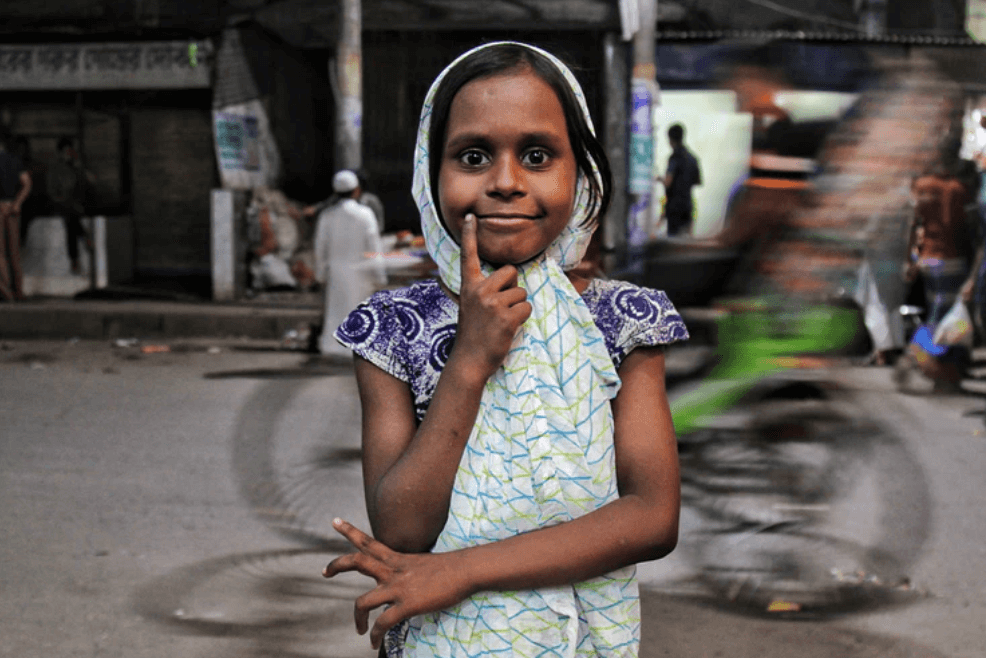




[…] From Streets to Schools: Making the Invisible Visible […]
Woñderful!